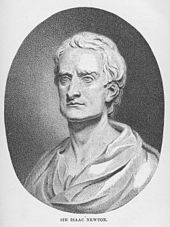- فيلمبرداري جان سخت ? ادامه دارد
- يک سکانس زيبا در فيلم آرتور
- جک اسپارو در دزدان دريايي ?
- سوراخ خرگوش - با بازي ديويد ليندزي
- خيانت - خانواده اي درجنگ با ارواح پليد
آخرین مطالب ارسالی
- كد گالری عكس در وبلاگ
- بازی آنلاین دخترانه و پسرانه فوق العاده محبوب و معروف پرندگان خشمگین Angry Birds Rio
- رمان مخصوص موبایل پدر خوب
- شوخی با حافظ (طنز)
- همه چی بی فایده است + طنز
- مجله انگیسی dude.سری20
- تفاوت بچه های قدیم و جدید ! ( طنز )
- صورتحساب جالب آقا داماد !+ عکس
- فقط محض خنده !! (4)
- نامه جالب غضنفر به عشقش (اوج خنده)
- عـرض ارادت به سبک لاتی لوتی ها ! (طنز)
- سیر تکاملی تیپ مردان
- طنزهای کوتاه جدید و جالب ! (98)
- پ ن پ هاي سری7
- داستان پیرمرد بدهکارمطلب ارسال توسط ازمهرداد
- نگتیو جدید 2012مطلب ارسالی ازمهرداد
- براش زیبای Stage Lighting Brush
- فرزاد فرزین : گریه کن
- ضد حال يعني:
- تفاوت ایتالیایی ها با دیگر کشور های اروپایی
Isaac Newton
- توضيحات
- دسته: <-PostCategory->
- برچسب:مقاله درباره ی دانشمندان,
- نويسنده : borna
- بازديد:
Sir Isaac Newton PRS MP (25 December 1642 – 20 March 1727 [NS: 4 January 1643 – 31 March 1727])[1] was an English physicist, mathematician,astronomer, natural philosopher, alchemist, and theologian, who has been "considered by many to be the greatest and most influential scientist who ever lived."[7] His monograph Philosophiæ Naturalis Principia Mathematica, published in 1687, lays the foundations for most of classical mechanics. In this work, Newton described universal gravitation and the three laws of motion, which dominated the scientific view of the physical universe for the next three centuries. Newton showed that the motions of objects on Earth and of celestial bodies are governed by the same set of natural laws, by demonstrating the consistency between Kepler's laws of planetary motion and his theory of gravitation, thus removing the last doubts about heliocentrism and advancing theScientific Revolution.
The Principia is generally considered to be one of the most important scientific books ever written, due, independently, to the specific physical laws the work successfully described, and for the style of the work, which assisted in setting standards for scientific publication down to the present time. Newton built the first practical reflecting telescope[8] and developed a theory of colour based on the observation that a prism decomposes white light into the many colours that form the visible spectrum. He also formulated an empirical law of cooling and studied the speed of sound. In mathematics, Newton shares the credit with Gottfried Leibniz for the development of differential and integral calculus. He also demonstrated the generalised binomial theorem, developedNewton's method for approximating the roots of a function, and contributed to the study of power series. Newton's work on infinite series was inspired bySimon Stevin's decimals.[9] Newton was also highly religious. He was an unorthodox Christian, and wrote more on Biblical hermeneutics and occult studiesthan on the subjects of science and mathematics. Newton secretly rejected Trinitarianism, fearing to be accused of refusing holy orders.[10]
Contents[hide] |
Life
Early life
Isaac Newton was born on what is retroactively considered 4 January 1643 [OS: 25 December 1642][1] at Woolsthorpe Manor in Woolsthorpe-by-Colsterworth, ahamlet in the county of Lincolnshire. At the time of Newton's birth, England had not adopted the Gregorian calendar and therefore his date of birth was recorded as Christmas Day, 25 December 1642. Newton was born three months after the death of his father, a prosperous farmer also named Isaac Newton. Born prematurely, he was a small child; his mother Hannah Ayscough reportedly said that he could have fit inside a quart mug (≈ 1.1 litres). When Newton was three, his mother remarried and went to live with her new husband, the Reverend Barnabus Smith, leaving her son in the care of his maternal grandmother, Margery Ayscough. The young Isaac disliked his stepfather and held some enmity towards his mother for marrying him, as revealed by this entry in a list of sins committed up to the age of 19: "Threatening my father and mother Smith to burn them and the house over them."[11] While Newton was once engaged in his late teens to a Miss Storey, he never married, being highly engrossed in his studies and work.[12][13][14]
From the age of about twelve until he was seventeen, Newton was educated at The King's School, Grantham (where his alleged signature can still be seen upon a library window sill). He was removed from school, and by October 1659, he was to be found at Woolsthorpe-by-Colsterworth, where his mother, widowed by now for a second time, attempted to make a farmer of him. He hated farming.[15] Henry Stokes, master at the King's School, persuaded his mother to send him back to school so that he might complete his education. Motivated partly by a desire for revenge against a schoolyard bully, he became the top-ranked student.[16] The Cambridge psychologist Simon Baron-Cohen considers it "fairly certain" that Newton suffered from Asperger syndrome.[17]
In June 1661, he was admitted to Trinity College, Cambridge as a sizar – a sort of work-study role.[18] At that time, the college's teachings were based on those ofAristotle,[19] whom Newton supplemented with modern philosophers, such as Descartes, and astronomers such as Copernicus,

.png)
نظرات شما عزیزان:
 برچسب ها:
برچسب ها: کلامات کلیدی
جالب , www , funpatough , ir , مطالب جالب , خنده دار , تست هوش , com , loxblog , 98iha , تست هوش تصویری , طنز , مطالب طنز , وبلاگ فان پاتوق , سرگرمی ,














 خانواده ارنست
خانواده ارنست راه آبي ابريشم
راه آبي ابريشم آب و فيل ها!
آب و فيل ها!